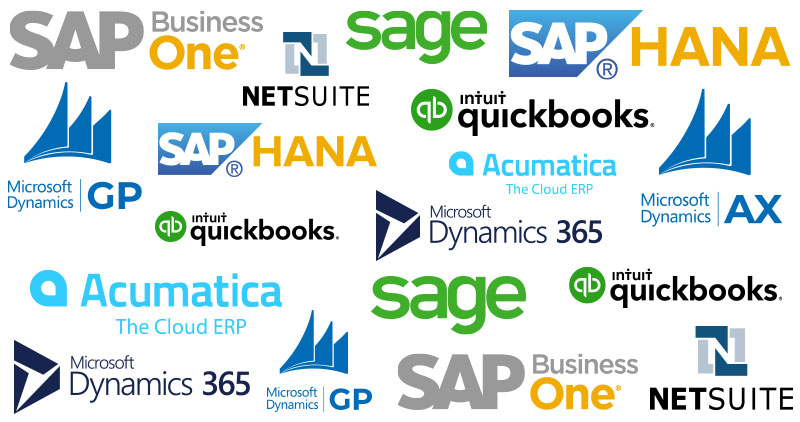Working with Unstructured Data Using an ERP System


You’ve built a solid foundation for your company — a great product, competent management, and sound working capital. But there’s still one thing that’s preventing you from elevating to the level of best-in-class — a differentiating factor that will give you the competitive edge over others. As your business grows and operational complexities increase, it’s difficult to keep track of your goals and be in control. In fact, scaling operations is not as easy as it seems. How many times have you heard a booming tech startup layoff employees in the dozens as it expanded? The growth trajectory and roadmap of every company is different, but what connects them all is the common goal to impress the buyer. Operational and functional complexities can, however, delay or spoil your expansion plans, if not managed well. Cost is another factor that can delay growth of companies because even to manage a growing business, you need additional capital and resources — lack of liquidity can upset not only your expansion plans but also derail your business from moving in the right direction.
Automation resolves a lot of the operational complexities and brings a certain level of grip on the day-to-day dealings within a company. An integrated management of business is what is needed if you are to stay in control and drive revenues, and it is what companies have invested in, in the form of enterprise resource planning or an ERP system. ERP systems have long been the norm for forward-looking companies wanting to elevate business processes and outcomes in the most cost-effective manner. Typically, the purpose of an ERP system is to connect the different functional hubs within a company through a suite of integrated business applications that generally use a common database to track, store, and manage incoming business data from diverse sources. What you get with an ERP is a single view of business operations across departments, enabling data flow and consistency between the various functional modules like procurement, sales, customer service, accounting, and human resources.
While ERP software resolves a lot of the functional and operational challenges between and within departments, the system basically depends on incoming business data from a myriad channels. This means that the viability and accuracy of business process implementation by an ERP system really depends on the data that it is fed. Data from, say, source documents like vendor invoices and customer sales orders come in unstructured formats, and need to be processed and verified for accuracy and authenticity before exporting to an ERP software.
Take the case of a typical accounting software like Intuit QuickBooks. Users have the best solution at their disposal to keep all their financial data and processes in order with this kind of a solution. But a typical QuickBooks user, no matter how adept at operating the software, still needs to perform data entry to get all the relevant information from vendor invoices into the system. For growing companies, this means having to manually collect, sort, and validate incoming invoices in the hundreds and thousands before keying in data from these documents into an ERP system.
The purpose of an ERP system is somewhat defeated when companies are bound by the complexities of capturing and handling unstructured data.
Book a demo now
The time and costs involved in having your staff resort to handling paperwork in the hundreds on a regular basis really beats your chances at any expansion plans, let alone gear up for best-in-class anything!
In the age of digital transformation, it is imperative that you take care of any document-based process that needs to be implemented in order to get the right data into your ERP system. Processes like accounts payable, order processing, medical claims processing, check remittance management, etc., all must be optimized to facilitate automatic data availability to your ERP systems.
Artsyl’s intelligent process automation does just that and more. Artsyl’s platform solutions for managing document-based processes are built on its intelligent process automation software called docAlpha. docAlpha employs digital transformation technologies like AI and machine learning, RPA, intelligent document capture, business process automation, etc. to perform straight-through, touchless processing of vendor invoices, customer sales orders, medical claims, etc. before exporting the final approved documents and data to your ERP.
Artsyl’s platform solutions are designed to integrate with a myriad ERP systems like Acumatica, Sage, Oracle NetSuite, QuickBooks, Microsoft Dynamics 365, Microsoft Dynamics GP/AX, SAP Business One, etc. This creates a continuous processing platform that you can work on to handle manual, document-intensive tasks, with accurate, processed data from unstructured documents automatically exported to these ERP systems in no time.
The best part is, you can work with unstructured data from the comfort of your familiar ERP environment without having to sign in and out of your system, or make changes to underlying connected systems and processes.
In your race to impress the buyer, you cannot afford to hold up your talented staff to handle mundane, repetitive document-intensive tasks. Leave it to intelligent automation and Artsyl to drive efficiencies along your document-based processes — leverage your ERP software to the fullest with accurate data.
Contact Us for a demo on docAlpha for process optimization and business acceleration.